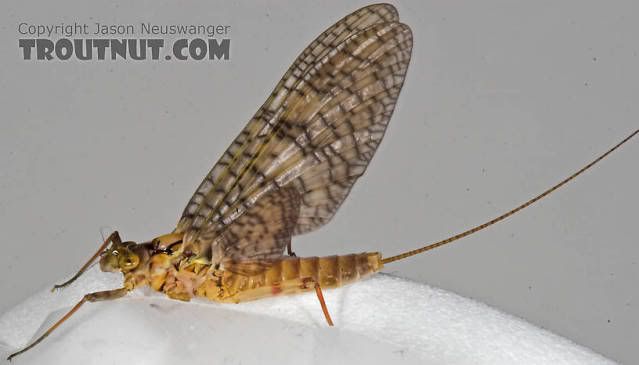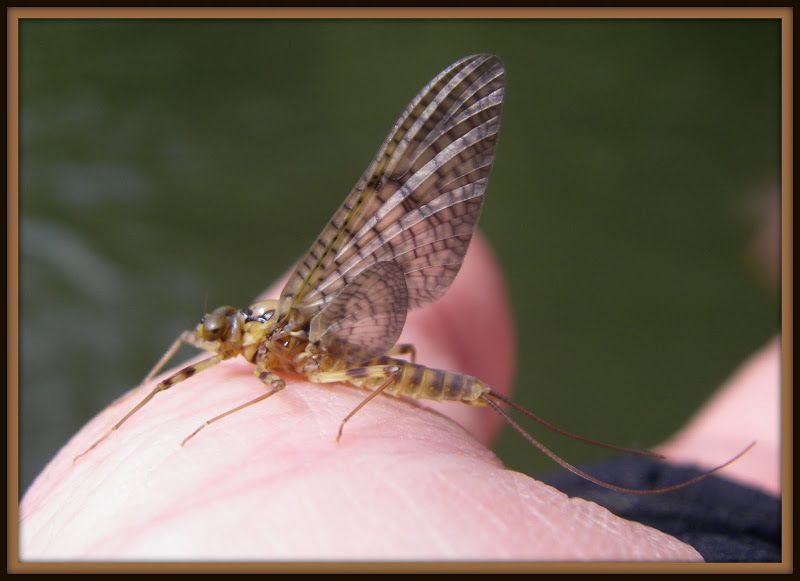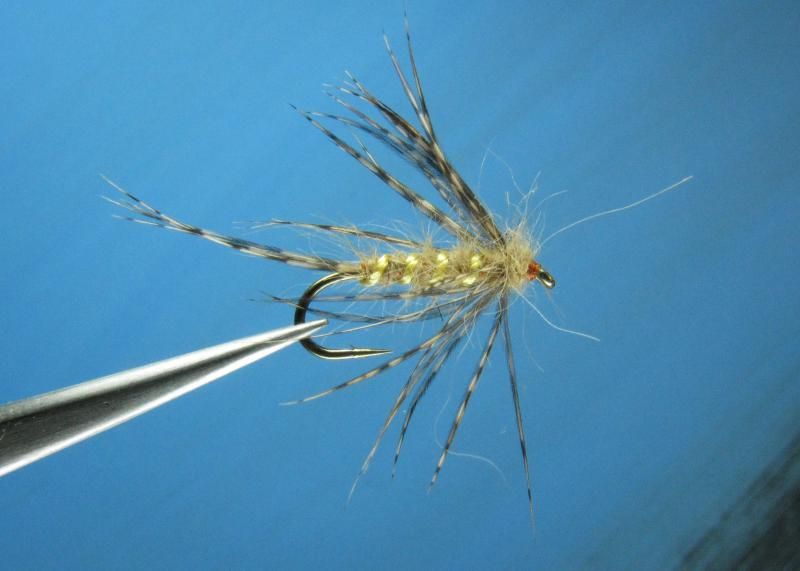I'll run on a little more with the March Browns.
First I noticed that Mr. Flick's Streamside guide that is posted is for adult insects (dry flies) and not nymphs.
As I have investigated more into some of my books on the MB it is clear that the MB on the west and the MB on the east are not only different species but different Genus. March browns in the west are made up of predominantly 4 species of the Genus Rhrithrogena where march browns of the east are of the Genus Stenonema are more recently called Maccaffertium. This would lend to some of the discrepancies in size and color. It makes a little difference for us as hatch matchers but probably little difference for the fish on either coast. All the resources I looked at stated the Rhithrogena (Western March Brown) is available in the east but is a non-factor for fly fishing. All of them lend this to water condition and that Rhrithrogena is very dependent on a healthy system and that many eastern streams have at one time or another not been able to support them. My favorite resource for mayflies of the west is
Western Mayfly Hatches: From the Rockies to the Pacific by Rick Hafele and Dave Hughes. This book was published about 4 years after I started to really fish wet flies. It was a March Brown flymph pattern that got me into flymphs. The pattern I used was listed in Dave Hughes' book
Wet Flies. There is a march brown flymph pattern in there which is listed as follows.
Hook: 2x stout, #12-16
Thread: Crimson red Pearsall's Gossamer silk
Hackle: Furnace or brown hen
Tails: 2-3 pheasant center tail fibers
Body: Dark hare's ear fur spun on crimson silk
Nearly the same pattern is found in
Western Mayfly Hatches with the pattern being accredited to Rick Hafele which only adds a gold rib, which I now use on all my MB patterns.
This is the pattern that introduced me to flymphs. Hafele writes in
Western Mayfly Hatches: " This dressing, based not he notes of Pete hide and James Lessening in the classic The Art of Tying the Wet Fly and Fishing the Flymph, was worked out early in our pursuit of this hatch, and continues to take trout to this day. If we (Hafele, Hughes) were to be restricted to one fly to fish throughout a western March Brown hatch, this might be it."
I haven't tied it in a while so decided I would give it a go.

Below is a fine picture of a Western March Brown taken by Arlen Thomason who authored and took all the photos in the book
Bug Water which I know at least a few of you have. I met Arlen early in my fishing through an online site forum which did worlds to help me with my fly fishing. The site is called Westfly and has a great easy to use format to investigate fishing pertinent information on western hatches. Here is the link:
http://www.west-fly-fishing.com/entomol ... logy.shtml The site is administered by another western author and fly fisherman Scott Richmond.

- Rhrithrogena MB Oregon.jpg (36.87 KiB) Viewed 8919 times
Now Hafele's flymph is not a bad representation of this and the mature nymphs of the these will have very dark wing pads, which would be represented well by the furnace hen option in the pattern recipe.
Why the red silk though?
Well, if we look at another photo, found on the site William listed (Trout Nut), of the underside of a Rhithrogena nymph we can see why. I have confirmed this color over and over again on many streams and rivers in Oregon and especially on the Deschutes River where I first fished this pattern.

- Rhrithrogena MB underbodies.jpg (104.01 KiB) Viewed 8942 times
Do fish recognize color and key in on it? I think there is little doubt in this matter. Do the fish care if the color is in the head, along the body or in the tail? I'm not so sure. More important is that it is present.
Now to throw a small loop in the matter let's take a look at a sample of an Eastern March Brown (Maccaffertium) that was collected from the Beaverkill River and shown on the TroutNut site.

- Maccaffertium Beaverkill MB.jpg (85.85 KiB) Viewed 8927 times
If I am not mistaken, the Western March Brown flymph pattern listed by Hughes and Hafele would be a very appropriate match for this sample collected on the Beaverkill. Do these Beaverkill MB have the red underneath? I don't know. But tied with the red or without, this Western March Brown pattern would, I believe do very well for fishing the March Brown hatch on a famous Eastern river.

That's all I got. Thanks Ray for inspiring me to to look a little closer these aquatic critters and reintroducing me to somewhat lost pattern in my box. It will never be absent again.




